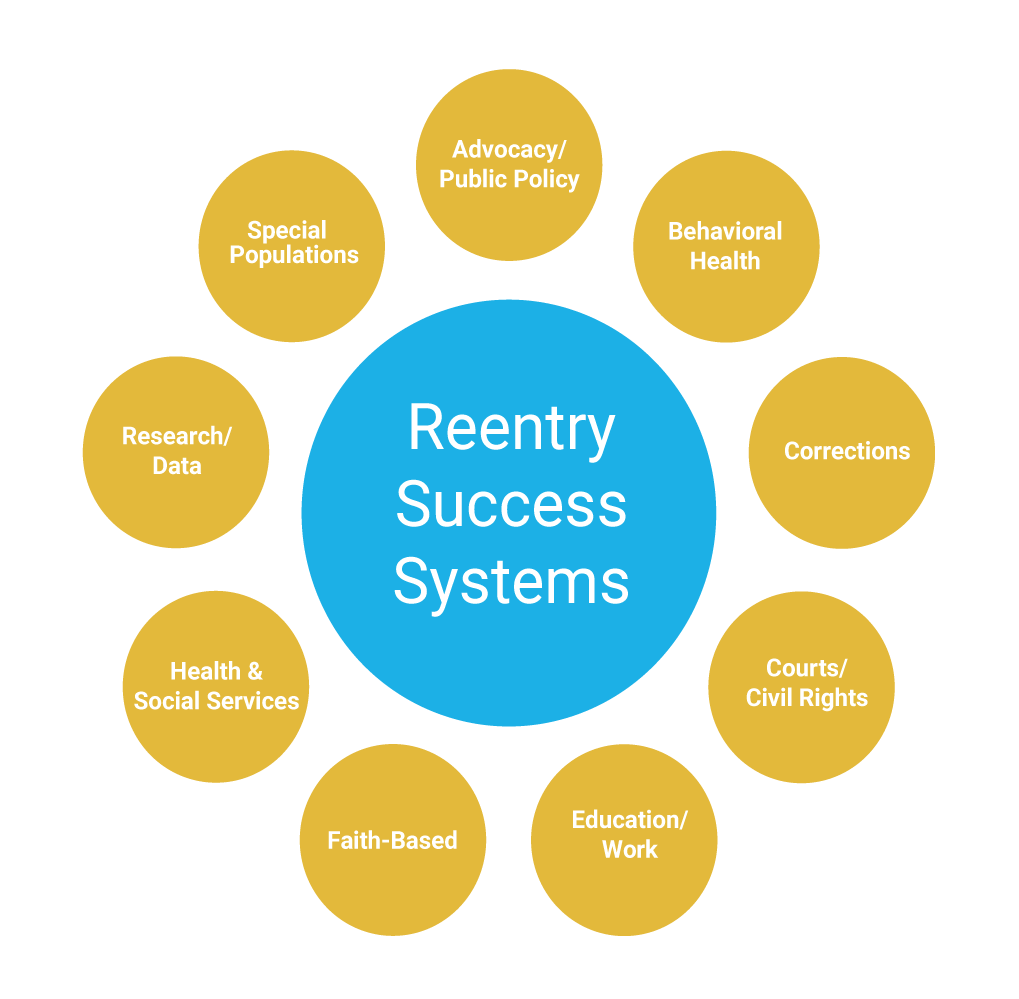As previously highlighted, improving reentry prospects requires a rethinking of the responsibility for positive outcomes and focusing on cross-system collaboration. The primary actors are state and local government leaders; however, families, faith-based organizations, media organizations, businesses, and advocacy organizations each have a role in building supportive environments where formerly incarcerated individuals can thrive. While the goal is to produce an environment in which all related systems—not just corrections—work in tandem to improve reintegration, this ideal is only possible when individual systems take ownership over outcomes.
Given the necessity of cross-system collaboration to improve recidivism rates, Reentry Ready project stakeholders note several critical actors whose engagement would be indispensable in achieving optimal outcomes. They are a diverse body, not only in purpose but in function as well. These actors are relevant across Reentry Ready’s project stakeholders suggested strategies and, when operating in mutually productive ways, have the potential to produce significant and positive results. One example involves healthcare workers and corrections workers collaborating to provide effective and compassionate care; another involves educators and data collectors collaborating to identify gaps in preparation with the goal of improving post-release outcomes.
What follows is a listing of key actors and a visual representation of the same:
Advocacy & Public Policy—State and local government leaders, think tanks and advocacy organizations, victim’s rights advocates
Behavioral Health—Mental health and substance abuse advocates, practitioners, researchers, and consumers
Corrections—Inmates, corrections officers, wardens, sheriffs, other staff, researchers, and regulators, community-based detention and other community-based correction services
Courts / Civil and Human Rights—Law enforcement (police and sheriffs), judges, prosecutors, defense attorneys (including public defenders), civil and human rights organizations
Education/Work—Prison education programs, workforce training
Faith-Based—Evangelical organizations, service providers, advocacy efforts, prison ministries
Health and Social Services—Medicaid, correctional healthcare, housing services, employment services, family reunification services, reentry programs, case management
Research and Data—Researchers, academic centers, public agencies
Special Populations—Women, disabled, elderly (55+), juveniles, veterans, LGBTQIA
Key actors must focus on both a breadth and depth of inputs. To cultivate the appropriate level of breadth to engage with strategies in a maximally constructive way, key actors must work to gain an understanding of needs across entities and a working knowledge of the functions of other systems. This breadth of knowledge allows those in certain organizations and roles the ability to partner and collaborate with those outside of their own silos. For depth, those engaged in cross-system collaboration must be deeply aware of challenges in their own systems.
This is important so that the plans for moving forward will be reflective of that awareness and not doomed to fail at the outset due to unrealistic commitments. This knowledge will also allow those involved to help other organizations and officers troubleshoot. Both breadth and depth are vital as those in relevant systems often face growing expectations as needs expand without a matching expansion of resources. Additionally, these systems are usually accompanied by a beleaguered work force routinely robbed of any real sense of autonomy. These challenges require an agility rooted in preparation, understanding and empathy.
Motivation mobilizes actors to behave in a way that promotes the implementation of the aforementioned strategies. Mechanisms for incentivizing actors present a wide array of challenges and exist at varying levels of effectiveness. All identified by Reentry Ready project stakeholders are valuable potential tools in the effort to reduce recidivism.


